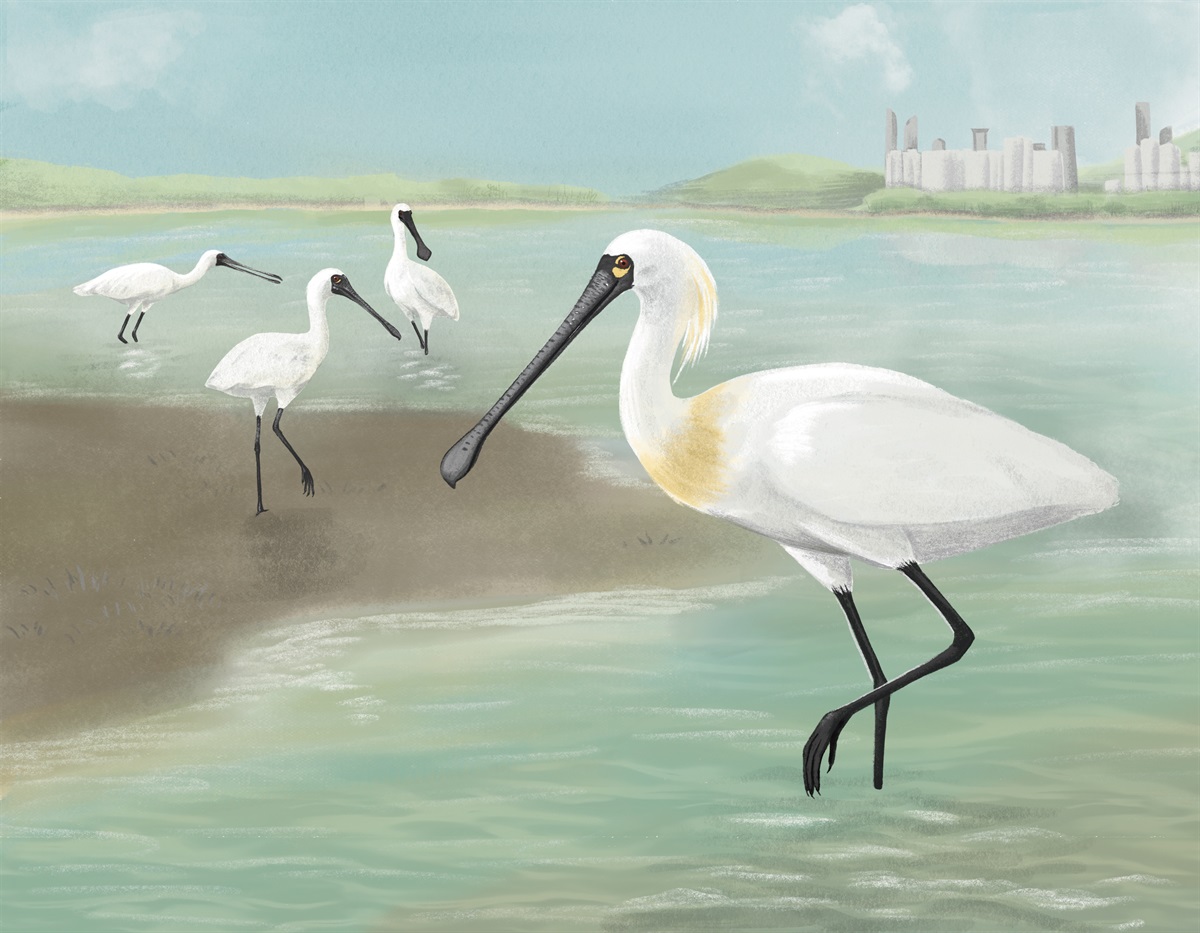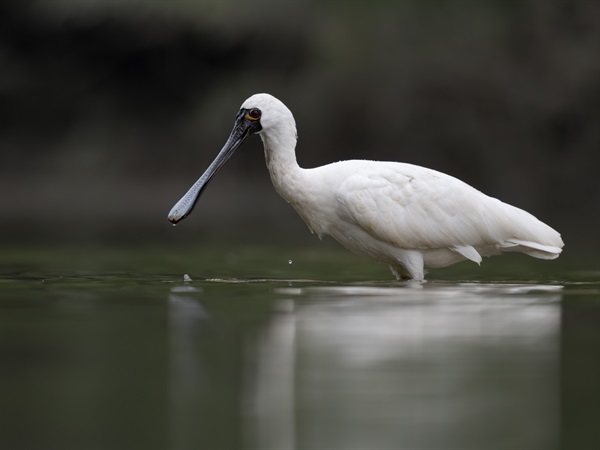Black-faced Spoonbill is a symbol of bird conservation in Hong Kong and East Asia, and may be a familiar name to many of us. However, the global population of this renowned bird superstar once plummeted to below 300 in the 1980s, which aroused international attention. Fortunately, the number of Black-faced Spoonbill gradually recovered with the help of the international collaborative effort. The International Black-faced Spoonbill Census 2021 coordinated by the Hong Kong Bird Watching Society even recorded an encouraging number of over 5,200 individuals!

This white-feathered wader has two distinctive features: the unique spoon-shaped bill and the bare black skin on its face. Individuals swing their bills from side to side in a peculiar way to catch fish and invertebrates in water. During breeding season, they appear more stunning with golden tints put on their feathers on the crest and breast.
The wetland at Mai Po and Inner Deep Bay, especially the fishponds and marshes therein, is the major overwintering habitat of Black-faced Spoonbill in Hong Kong. This site was designated as a 'Ramsar Site' in 1995 (the Ramsar Convention is an intergovernmental treaty for the conservation of wetlands of international importance), and its management by the Government is partly assisted by World Wide Fund for Nature Hong Kong. In winter, you can easily find Black-faced Spoonbills and Eurasian Spoonbills there. When summer comes, they travel for long distances back to the small islands in the western Korean Peninsula and Liaoning Province of China to find their mating partners. It is worth mentioning that the demilitarised zone between North and South Korea has become an important breeding ground for Black-faced Spoonbill which is believed to be due to the very little human disturbance in the restricted zone.
| Family | Threskiornithidae |
|---|---|
| Scientific Name | Platalea minor |
| Adult Size | 60–78 cm in length |
| Habitat | Wetland |
| IUCN Red List Status | Vulnerable |
